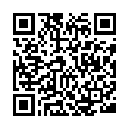

Últimos Cambios
 Blog personal: El hilo del laberinto
Blog personal: El hilo del laberinto


|

|
Últimos Cambios |
 Blog personal: El hilo del laberinto
Blog personal: El hilo del laberinto
|

|
|
Última Actualización: 13 de Abril de 2.000 - Jueves
SANS Institute envía a sus organizaciones asociadas un llamamiento para que configuren correctamente sus sistemas y así evitar en lo posible los ataques de denegación de servicio (DoS), últimamente tan de moda en Internet.
No vamos a repetir aquí lo que ya hemos dicho en anteriores boletines (ver enlaces al final de este documento) sobre los ataques de denegación de servicio, sus implicaciones y la forma de evitarlos. En esta ocasión SANS Institute, una organización conocida y reputada en el campo de la seguridad, hace un llamamiento para que todas las organizaciones conectadas a Internet configuren correctamente sus sistemas y, así, evitar ataques de denegación de servicio a terceros.
Efectivamente, estas medidas no evitarán que se realicen ataques DoS contra nosotros, pero evitarán en lo posible que nuestros sistemas sean empleados contra máquinas ajenas o, llegado el caso, permiten que se nos pueda identificar (y por tanto, ponerse en contacto con nosotros) si nuestra red está siendo utilizada en un ataque de este tipo.
Las reglas son extremadamente sencillas y se implantan de forma muy eficiente en cualquier router de frontera. Personalmente opino que estas configuraciones deberían ser absolutamente obligatorias para cualquier organización conectada a Internet, incluyendo a los propios "carriers".
Deben filtrarse todos los datagramas entrantes cuya dirección de origen o remitente:
También deben filtrarse los datagramas entrantes cuyo destinatario sea la dirección "broadcast" de nuestra red.
De esta forma se evitan un buen número de ataques y, por otra parte, se evita también que seamos utilizados como amplificador "smurf" contra otros.
No debe permitirse que ningún datagrama malicioso abandone nuestra red, de forma que pueda atacar otras. Para ello:
Adjuntamos el llamamiento remitido por SANS Institute:
>>>>> To: Jesús Cea (xxxxxxx) From: Alan Paller, Research Director, The SANS Institute This is an urgent request for your cooperation to slow down the wave of denial of service attacks? As you may know, denial of service (DOS) attacks are virulent and still very dangerous. These are the attacks responsible for the many outages reported recently in the press and others that have been kept more secret. DOS attacks are a source of opportunities for extortion and a potential vehicle for nation-states or anyone else to cause outages in the computer systems used by business, government, and academia. DOS attacks, in a nutshell, comprise a world-wide scourge that has already been unleashed and continues to grow in sophistication and intensity. One effective defense for these attacks is widely available and is neither expensive nor difficult to implement, but requires Internet-wide action; that's why we're writing this note to request your cooperation. The defense involves straightforward settings on routers that stop key aspects of these attacks and, in doing that, reduce their threat substantially. These settings will not protect you from being attacked, but rather will stop any of the computers in your site from being used anonymously in attacking others. In other words, these settings help protect your systems from being unwitting assistants in DOS attacks, by eliminating the anonymity upon which such attacks rely. If everyone disables the vehicles for anonymity in these attacks, the attacks will be mitigated or may cease entirely for large parts of the net. The simple steps can be found at the SANS website at the URL http://www.sans.org/dosstep/index.htm and will keep your site from contributing to the DOS threat. Tools will soon be publicly posted to determine which organizations have and have not protected their users and which ones have systems that still can be used as a threat to the rest of the community. More than 100 organizations in the SANS community have tested the guidelines, which were drafted by Mark Krause of UUNET with help from security experts at most of the other major ISPs and at the MITRE organization. The testing has improved them enormously. (A huge thank-you goes to the people who did the testing.) We hope you, too, will implement these guidelines and reduce the global threat of DOS attacks. We also urge you to ask your business partners and universities and schools with which you work to implement these defenses. And if you use a cable modem or DSL connection, please urge your service provider to protect you as well. As in all SANS projects, this is a community-wide initiative. If you can add to the guidelines to cover additional routers and systems, we welcome your participation. Alan Alan Paller Director of Research SANS Director of Research sansro@sans.org 301-951-0102 <<<<<
Más información:
Más información sobre los OpenBadges
Donación BitCoin: 19niBN42ac2pqDQFx6GJZxry2JQSFvwAfS
